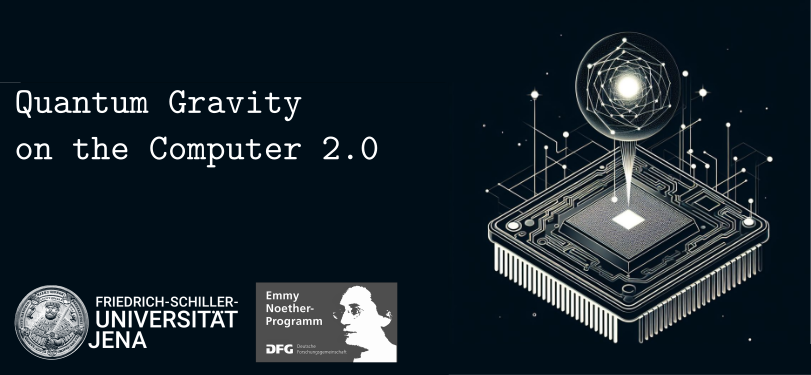The asymptotic safety (ASQG) and canonical (CQG) approach to quantum gravity have been developed to a large extent independent of each other. In this work we take first steps to bringing them into closer contact by working with the Lorentzian version of the functional renormalisation group of ASQG which we relate to the reduced phase space formulation of CQG.
Particular care is needed due to...
We demonstrate a tensor renormalization group (TRG) calculation for a two-dimensional Lorentzian model of quantum Regge calculus (QRC). This model is expressed in terms of a tensor network by discretizing the continuous edge lengths of simplicial manifolds and identifying them as tensor indices. The expectation value of space-time area, which is obtained through the higher-order TRG method,...
Spinfoams provide a rigorous definition of transition amplitudes in quantum gravity. I will present the code sl2cfoam-next that I developed to calculate Lorentzian spinfoam amplitudes on the computer, showcasing its basic usage, its strengths and limitations and a few important applications so far.
We numerically study homogenous and isotropic quantum cosmology using the spinfoam formalism of Loop Quantum Gravity (LQG). We define a coupling of a scalar field to the 4-dimensional Lorentzian Engle-Pereira-Rovelli-Livine (EPRL) spinfoam model. We employ the numerical method of complex critical points to investigate the model on two different simplicial complexes: the triangulations of a...
In this talk, I will provide a short introduction to lattice gauge theory, its history, and current challenges. I will try to draw connections to the developments of quantum gravity and possible lessons to be learned.
Causal Set Theory is a Lorentzian approach to quantum gravity in which spacetime is fundamentally discrete. Lorentzian discreteness poses an obstruction for a Hamiltonian formulation of dynamics, but it is well-suited for exploring dynamics in the spirit of the path integral. This talk will focus on the Decoherence Functional, a generalisation of the probability measure that encodes quantum...
The causal set approach to quantum gravity is a theory of locally finite posets with a very specific continuum approximation. It is motivated by a unique feature of Lorentzian geometry, namely the causal structure poset which captures the full conformal geometry. Being a discrete theory of spacetime, it lends itself rather naturally to computer simulations and numerics, albeit with a...
The developments of the past decades in computational power allowed us to implement numerical simulations to test the impact of the fluctuations of gravity furthermore to see if there are any interesting effects when one couples matter systems to it. In my talk I will present results regarding coupling matter fields to CDT including scalar and gauge fields. Only the scalar fields were...
I will first briefly introduce Euclidean dynamical triangulations with a non-trivial measure term and motivate the need for an algorithm that is more efficient than a standard Metropolis algorithm. I will then introduce the concept of rejection-free algorithms, and discuss generalizations that are necessary to employ those algorithms for EDT. I will test the generalized algorithm on the 2d...
The problem of obtaining and interpreting solutions to the quantum Hamilton constraint of LQG is a long-standing and difficult one. We approach this problem with novel numerical methods from the context of neural networks, thereby taking the first step in applying deep learning methods in LQG.
We present the basic idea of parameterizing quantum states with a neural network, and of...
In loop quantum gravity (LQG), the volume operator plays a crucial role in the study of quantum geometry and quantum dynamics. However, the effect of the volume operator is studied only for some simple cases. In this talk, we introduce a numerical algorithm that can give the matrix elements of the volume operator on arbitrary valent gauge-variant and gauge-invariant spin network states and...

